Destination
If you are flying to a part of the world where healthcare is expensive and you don’t have any health insurance, then health coverage at least is vital. Even if you don’t intend to have a wild vacation white water rafting, horseback riding and paragliding, you can still have small medical needs – for example from a mosquito bite that becomes infected – and these small medical bills can be high unbudgeted for expenses.
Stuff
Are you planning to take a digital camera? How about smart phone or a laptop? Do you have designer clothes? Do you have expensive luggage? Are you planning to take any specific equipment, skis for example? If you are taking anything on your vacation that’s worth a consider amount of money, then you should have insurance to cover the cost of replacing it.
Now that you’re convinced that insurance is a good idea, don’t just sign the first travel insurance policy that’s handed to you. Shop around. You can get some bargains out there, but make sure you read the policy and what it covers before signing.
Travel Costs
Does the insurance cover you for delays? What does it cover – for example does it cover overnight expenses in a hotel? Does it cover you for rebooking flights? Will it allow you to reschedule using a different airline to what you originally intended? What if your holiday has to be canceled – will it refund all of your costs unreservedly or will it only do so under certain circumstances?
Health
Check the amount insured. When looking at health insurance you need to have a figure in the millions of dollars of healthcare protection. If the cover in adequate, then you need to check what isn’t covered by the policy – for example some policies don’t cover sporting accidents as part of their basic policy. Will the insurance company pay for special assistance/flight if you have a major health problem? What doesn’t it cover?
Stuff
Again the most important thing to check here is what isn’t covered. If you are taking any of the uncovered items, then you need to either investigate how much the upgrade will be to put these items under the policy cover, or find a policy that does cover them. What kind of documentation will you need to 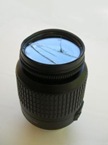 provide in order to get your insurance company to pay up – for example, some insurance policies will require you to have made an official theft complaint to the local police, and perhaps have the crime number it was allocated, if you are claiming an item was stolen. You may also be asked to supply photographic evidence that you owned the item you’re claiming for, and/or produce the receipt from when you bought it! What about items that you purchase on your vacation, after the policy comes into effect? Are they covered? If you have expensive luggage, is damage by the airline/in transit covered by your policy?
provide in order to get your insurance company to pay up – for example, some insurance policies will require you to have made an official theft complaint to the local police, and perhaps have the crime number it was allocated, if you are claiming an item was stolen. You may also be asked to supply photographic evidence that you owned the item you’re claiming for, and/or produce the receipt from when you bought it! What about items that you purchase on your vacation, after the policy comes into effect? Are they covered? If you have expensive luggage, is damage by the airline/in transit covered by your policy?
It you are taking a number of expensive items you might find it easier to pay a more expensive premium that doesn’t require as much in the way of evidence of ownership if you need to make a claim. Take note of any serial numbers your possessions have, and if you have a digital camera, consider taking photos before you leave home.
Travel insurance is often a necessary item to budget for when planning your holiday finances. Make sure you read all the small print, particular the exclusions, and the excess that you will need to pay in the event of a claim being made by you against the policy. You should also check whether or not you will be responsible for first paying any bills, and then claiming back from them, or whether you can have the hospital, for example, invoice your insurance company direct.
Adequate and appropriate travel insurance may be an expense you don’t want, but in the event of something going wrong on your vacation, it could save you a lot of money and stress.

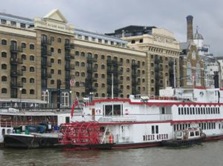
 duce the size of your environmental impact, such as diving in small groups which are less likely to disturb the coral and not fishing in restricted areas. Don’t be tempted to take a little bit of this or that home in your pocket, it might only be a tiny piece of coral, but It’s part of the larger eco-structure so admire the beauty, take underwater photos to show the people back home, and leave what belongs on the Reef at the Reef!
duce the size of your environmental impact, such as diving in small groups which are less likely to disturb the coral and not fishing in restricted areas. Don’t be tempted to take a little bit of this or that home in your pocket, it might only be a tiny piece of coral, but It’s part of the larger eco-structure so admire the beauty, take underwater photos to show the people back home, and leave what belongs on the Reef at the Reef!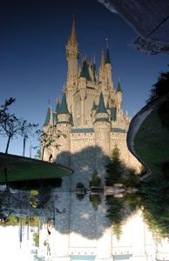 Disney World isn’t cheap to visit and so it’s important to know what you’re going to pay for once you enter the park. For example, you will need to budget for meals and drinks – especially in the Florida heat – but if you plan your visit you can schedule your park times around meal times. You might need to pay out for drinks inside the park, but a budget tip for this is that if you’re taking children into the park, take some picnic cups with you, and then purchase one supersized drink and divide it between the appropriate amount of cups. Leave the park at mealtimes unless you want to do something special such as have a character meal at Cinderella’s Castle (you may need to make a reservation for this at least 3 months in advance so planning is an absolute necessity), and then return after you’ve eaten.
Disney World isn’t cheap to visit and so it’s important to know what you’re going to pay for once you enter the park. For example, you will need to budget for meals and drinks – especially in the Florida heat – but if you plan your visit you can schedule your park times around meal times. You might need to pay out for drinks inside the park, but a budget tip for this is that if you’re taking children into the park, take some picnic cups with you, and then purchase one supersized drink and divide it between the appropriate amount of cups. Leave the park at mealtimes unless you want to do something special such as have a character meal at Cinderella’s Castle (you may need to make a reservation for this at least 3 months in advance so planning is an absolute necessity), and then return after you’ve eaten.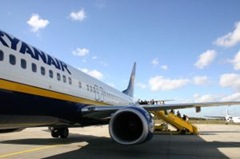
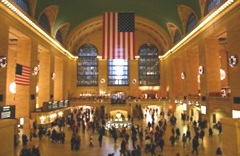 s you’ll notice is that your fellow passengers are rarely Americans. For the duration of your journey you’ll socialize with people from all over the world and many different walks of life. Young backpacking students chat readily with elderly retired couples, all exchanging travel stories about what they’ve seen and where they’re going next. Between this informal chat, the never ending but constantly changing backdrop outside the window, and the restaurant car, the hours pass far more quickly than you would think.
s you’ll notice is that your fellow passengers are rarely Americans. For the duration of your journey you’ll socialize with people from all over the world and many different walks of life. Young backpacking students chat readily with elderly retired couples, all exchanging travel stories about what they’ve seen and where they’re going next. Between this informal chat, the never ending but constantly changing backdrop outside the window, and the restaurant car, the hours pass far more quickly than you would think.